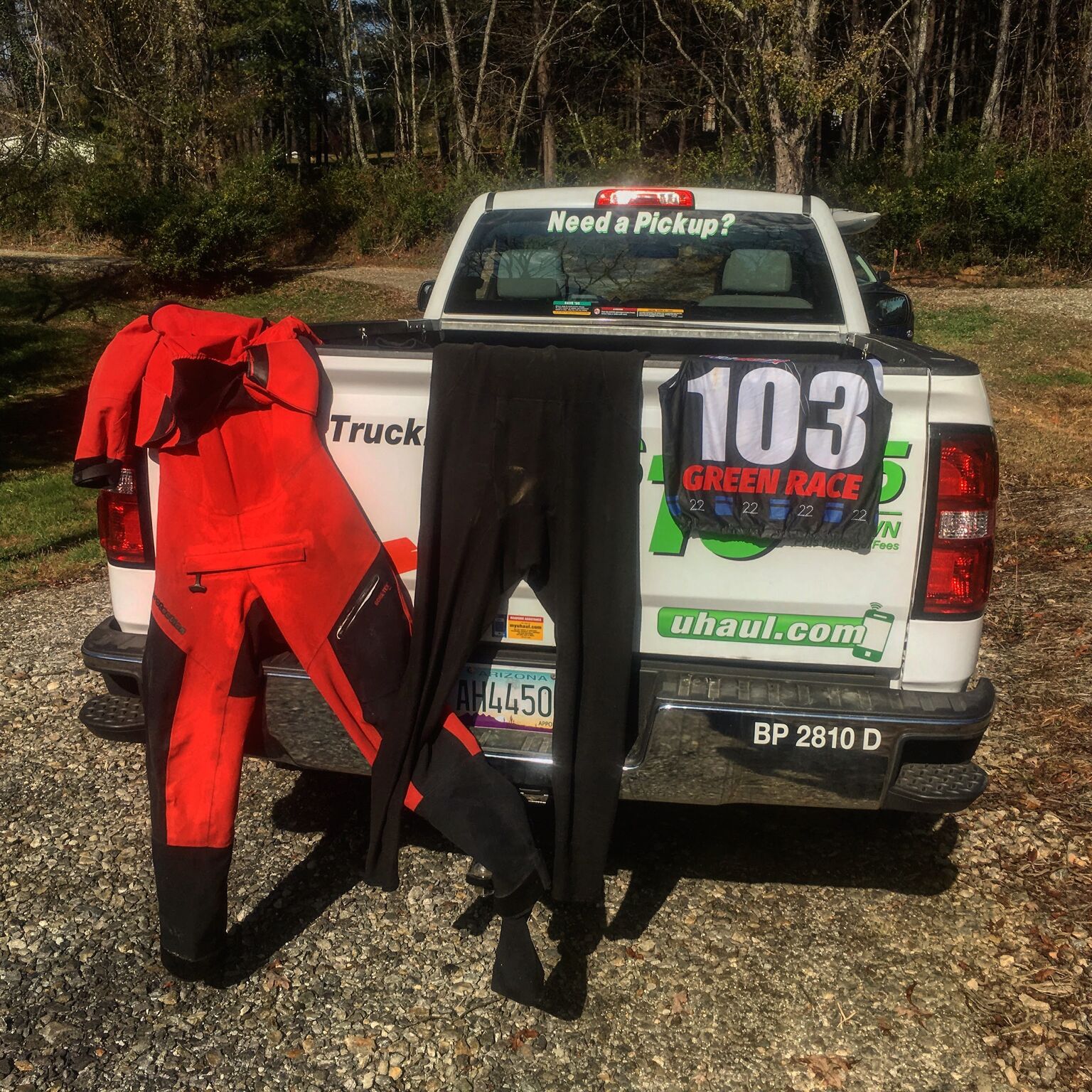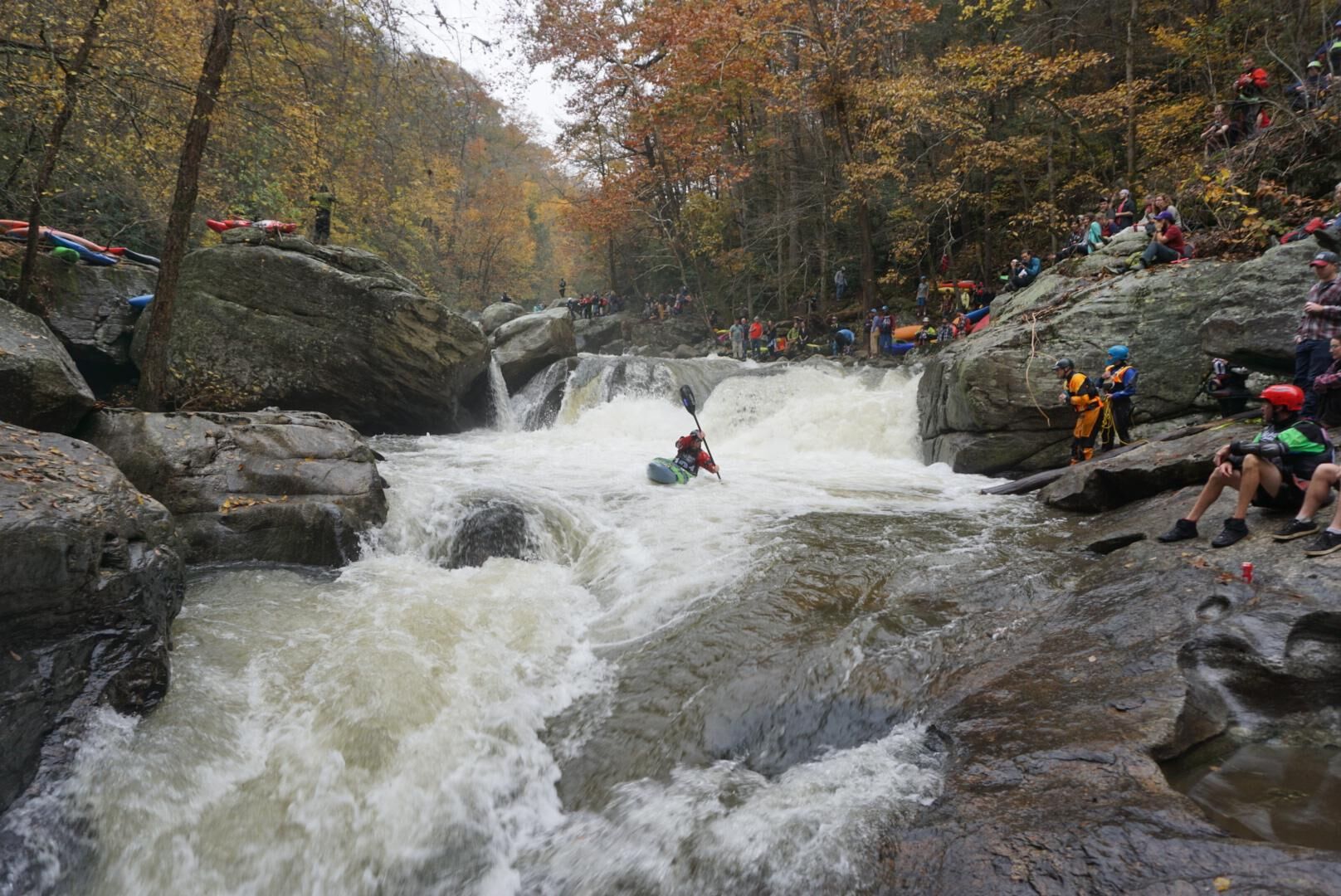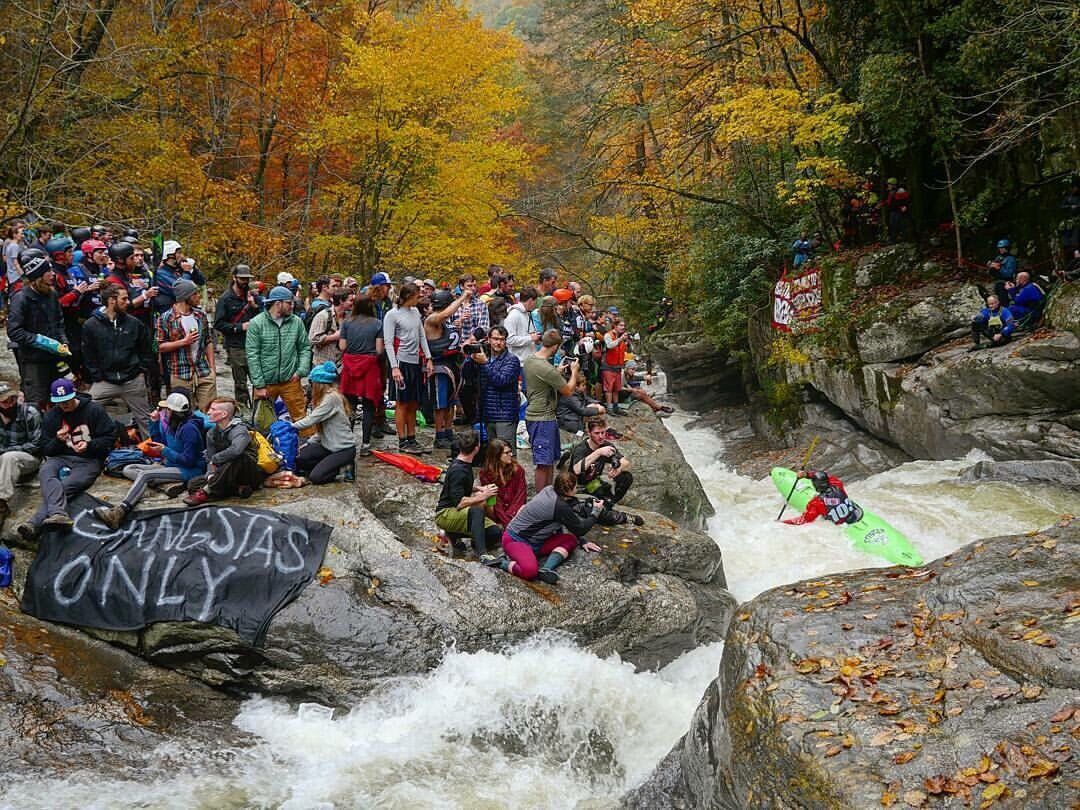The Road to the Green
A year or two back three kayakers were sitting in a bar in southeast Portland. They were debating what a cadre of kayakers from different regions would naturally debate: which state has the best whitewater run. All three were east coast transplants to Oregon so none had any birthright claim to its wondrous waters. Still, all were in agreement that some of the best boating in Oregon is in southern Washington. But when it came time to decide whether Asheville had better water than Portland and the Columbia gorge, the debate really began in earnest...
You see, the southeast United States has a storied history in whitewater culture. The rivers tend to be dam controlled and rain fed, meaning at some points (perhaps today still) you could call up the dam operator and find out when a release was happening. Basically this allows for guaranteed flow on demand. The boating season isn’t endless; as the seasons can be in the northwest, but it is consistent. There are always releases happening and with over 30-40 years, and several generations of paddlers, the boating community runs deep and strong.
In the west you may have been introduced to whitewater by friends. In the east it is just as likely that your parents or uncle/aunt gave you the bug. The water is warmer, the rocks smoother. Oh that brings us to another point: there are rocks. They’re an integral part of the southeast boating experience; as is playboating. That is a skill that west coast paddlers often don't develop at the same pace as their eastern contemporaries. Out west we like to call it rodeo creeking.
The west coast boasts granite domes and slides ( California), steep boulder creeks ( Colorado), giant roadside whitewater (Idaho and Washington) and some of the best steep creeks in the world (Washington and Oregon). There's also another thing we have a lot of: runnable waterfalls. If you start creeking in the east and you want to keep running newer and interesting runs you'll eventually end up out west to hone your waterfall and high volume creeking skills. We consistently have what the east coast considers high volume creeks. A common statement from west coast paddlers paddling the Green Narrows for their first time—before they learn to embrace the mank and realize its glory—is that it’d be better with more water. But everyone has an opinion and the base line is this: the Green River narrows are amazing. They are as “church” as runs like the Little White Salmon and Green Truss out here in the Pacific Northwest.
How I ended up at the Green stems from that conversation a few years back. As luck would have it a good friend of mine—the Asheville native, had moved back and was able to loan me a kayak and a couch to sleep on. A few phone calls and a quick flight later and I found myself on the road to the takeout of the Green Narrows. We met at the takeout and after some quick logistics loaded up boats and headed back up to the put in. Now the weekend I chose to visit the Green is special (more on that in a moment), however, it is not uncommon for a kayaker to make the sojourn to see the Green Race. It has been running for 22 years and is one of the rowdiest, and well attended races in whitewater. They call it the greatest show in sports, for a good reason. It's a 5 minute (and if you're fast sub 5 minute) race through extremely steep and technical class V whitewater. A race where long kayaks, 11 feet long, are considered the best and most challenging craft—the true vessel for the Green Race. So much so, that various companies have designed long boats specifically for this storied competition.
I'd never paddled in the southeast but had consistent and solid experience running class V on the west coast. My friends in the area also talked up the run as within my skill level. So the bug was there before I even landed. I tried to keep my excitement in check about racing by setting realistic goals: I wanted to finish the race without mishap. But subconsciously it was decided, come race day, I would be in a bib and participating at a rate that I was most comfortable with. To get to that point though meant practice laps. In boats I was unfamiliar with and hadn't’ paddled often. To prepare I spent the month prior paddling a similar long kayak with friends on the Green Truss and other local runs. They’re nothing like the Narrows but the principle is the same: keep it straight and go fast.
The authors ‘rental car’ and racing gear
Learning a difficult run in as many laps possible in two days without tiring myself out was challenging. My goal was to down a race time that I could be satisfied with and build on it. Thankfully I received great beta (directions) on the run from my friends Colin, Taylor and Josh as well as from a cadre of other awesome local paddlers whom I can’t thank enough. That beta and training gave me a chance to learn the lines in both a short kayak and a long kayak. Racing the Green in a long boat, as they're called, has been a goal of mine for a while. It was amazing to have the opportunity to do so with such good friends.
After one short boat lap and two long boat practice race laps I was feeling confident enough to be able to race. So there I was, high noon on the first Saturday in November: so much history swirling around, world class paddlers pushing their limits and everyday hardcore paddlers setting out to best their friends and themselves. It was a pleasure just to see the starting line and watch folks blast off into the course. Soon enough though it was my turn. I started in seat 103 out of 146 and finished with a time of 5:35.9 for 82nd place. I consider that a success. Placing didn't matter so much as putting down a complete and smooth lap. With ominously titled rapids like "Boof or Consequence", a sharp turn into a bad pin no matter which line you take, and "Go Left and Die"; a rapid with a high margin for ruining folks race laps, a clean lap was no easy feat! Clean lines through the top half of the race set you up for hope in the final push. The hardest and most dangerous rapids of the race were the final sequence. After Go left and Die, the river turns on edge and drops sharply through several highly consequential drops. Zwicks, Chiefs and Pencil Sharpener all have hard lines to nail down when you're lactic and paddling hard. But they don’t compare to the spectacle, and consequence of the final series of drops.
A paddler enters the notch. Photo courtesy of Adam Edwards
The notch, a tight squeeze and seam above a sharp turn leads to an 18ft waterfall called Gorilla that lands on a shelf then rockets through several high speed slides to the course's finish. This is where all your clean lines up top may come to naught. Thankfully I had good advice to take it smooth and easy through the top and had plenty of energy to focus on my lines through the crux rapids. There is more than just whitewater to distract you as you come into the final set of drops. Throughout the race you’ll hear hoots and hollers as you pass spectating kayakers and the random hiker. But as you come closer to Gorilla, the number of people on the banks increases steadily till you reach the bottom of Chiefs. There you begin to hear the roar. The moment you need to be most focused is when you see it. A massive crowd of paddlers, spectators, hikers, and safety. You enter the notch to the roar of the crowd, their tone telling you how well they think your line will go. They always offer positive sounds, but tone can tell you a lot about whether they think you are going to crash at this crucial moment. And when folks did the concern was audible, and the celebration for recovery even louder. You can barely hear the whitewater over the roar of the crowd and the cowbells.
The author lining up Gorilla. Photo courtesy of Priscilla Macy
My line through the crux went well, despite a few spins outs in a pocket called the speed trap and another called Nies Pieces. Regardless I quickly found myself racing across the finish line. In truth I was just happy to be there and to have finished without a crash or injury. The Narrows were amazing and challenging and somehow I was rewarded with safe passage. I can't wait to go back and see the spectacle, meet more new and amazing people, and go kayaking with them. There is nothing like paddling into Gorilla and hearing the roar of a crowd. Until next year. A special thanks to the safety crew in the “pit” at Gorilla and speed trap. These folks go above and beyond.
The Pit. Photo courtesy of Adam Edwards





